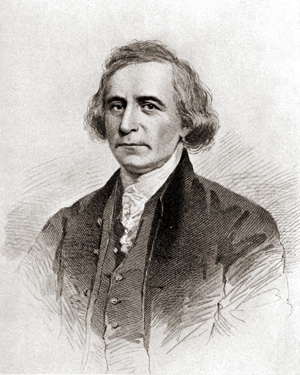On the demolition of Fort George
Philip Freneau
In New-York—1790
As giants once, in hopes to rise,
Heaped up their mountains to the skies;
With Pelion piled on Ossa, strove
To reach the eternal throne of Jove;
So here the hands of ancient days
Their fortress from the earth did raise,
On whose proud heights, proud men to please,
They mounted guns and planted trees.
Those trees to lofty stature grown—
All is not right!—they must come down,
Nor longer waste their wonted shade
Where Colden slept, or Tryon strayed.
Let him be sad that placed them there,—
We shall a youthful race prepare;
Another grove shall bloom, we trust,
When this lies prostrate in the dust.
Where Dutchmen once, in ages past,
Huge walls and ramparts round them cast,
New fabrics raised, on new design,
Gay streets and palaces shall shine.
To foreign kings no more a slave
(Disgrace to Freedom's passing wave)
No flags we rear, we feign no mirth,
Nor prize the day that gave them birth.
While time degrades Palmyra low,
Augusta lifts her lofty brow—
While Europe falls to wars a prey,
Her monarchs here, should have no sway.
Another George shall here reside,
While Hudson's bold, unfettered tide
Well pleased to see this chief so nigh,
With livelier aspect passes by.
Along his margin, fresh and clean,
Ere long shall belles and beaux be seen,
Through moon-light shades, delighted, stray,
To view the islands and the bay.
Of evening dews no more afraid,
Reclining in some favourite shade,
Each nymph, in rapture with her trees,
Shall sigh to quit the western breeze.
To barren hills far southward shoved,
These noisy guns shall be removed,
No longer here a vain expense,
Where time has proved them no defence.—
Advance, bright days! make haste to crown
With such fair scenes this honoured town.—
Freedom shall find her charter clear,
And plant her seat of commerce here.
Fort George, at the southern end of Manhattan island, was originally a Dutch fort called Fort Amsterdam. The walls of the fort were thirty feet high. It was the residence of British governors and was demolished by edict of the US Senate in 1790.
Freneau wrote in the Daily Advertiser: History mentions that in the year 1790, fourteen years after this republic had shaken off its yoke of foreign bondage, this fort was totally demolished by an edict of the Senate, and the space it occupied employed to better purpose in making room for those elegant streets and buildings which now adorn this quarter of the city.
